Rulers of Austria on:
[Wikipedia]
[Google]
[Amazon]
This is a list of people who have ruled either the
(''Luitpold der Erlauchte'')
976–994 , , c. 940 , Richardis of Sualafeldgau
nine children , 10 July 994
aged about 54 , - , width=auto, Henry I the Strong
(''Heinrich der Starke'')
994–1018 , , late 10th century
son of Leopold I and Richardis of Sualafeldgau , ''never married'' , 23 June 1018 , - , width=auto, Adalbert I the Victorious
(''Adalbert der Siegreiche'')
1018–1055 , , c. 985
, c. 985
son of Leopold I and Richardis of Sualafeldgau , (1) Glismod of West-Saxony
no issue
(2)
one issue , 26 May 1055
aged about 70 , - , width=auto, Ernest the Brave
(''Ernst der Tapfere'')
1055–1075 ,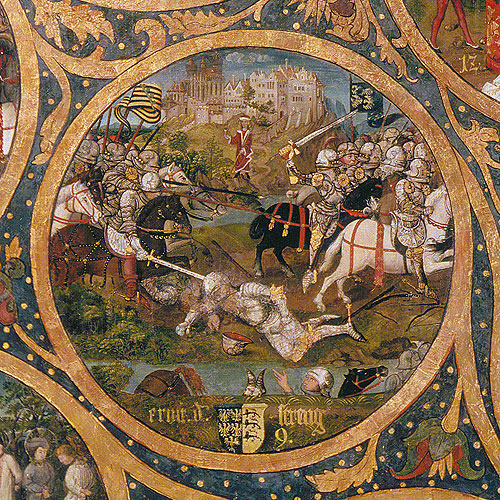 , c. 1027
, c. 1027
son of Adalbert and Frozza Orseolo , (1)
1060
three children
(2)
1072
no issue , 10 June 1075
aged about 48 , - , width=auto, Leopold II the Fair
(''Luitpold der Schöne'')
1075–1095 , , c. 1050
, c. 1050
son of
1065
eight children , 12 October 1095
aged about 45 , - , width=auto, Leopold III the Good
(''Luitpold der Heilige'')
1095–1136 , , c. 1073
, c. 1073
son of Leopold II and
no children
(2)
1106
eighteen children , 15 November 1136
aged about 63 , - , width=auto, Adalbert II the Devout
(''Adalbert der Andächtige'')
1136-1137 , , c. 1107
, c. 1107
son of Leopold III and
no children
(2)
1132
no children , 9 November 1137
aged about 30 , - , width=auto, Leopold IV the Generous
(''Luitpold der Freigiebige'')
1137–1141 ,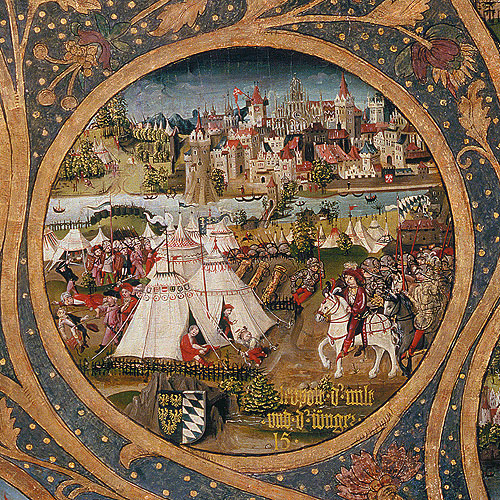 , c. 1108
, c. 1108
son of Leopold III and
28 September 1138
no issue , 18 October 1141
Niederalteich
aged about 33 , - , width=auto, Henry II Jasomirgott
(''Heinrich Jasomirgott'')
1141–1156 ,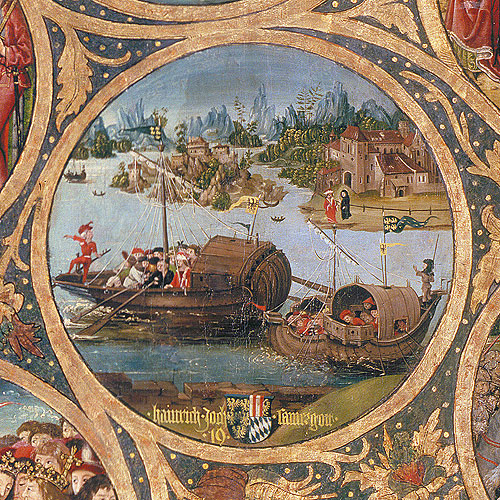 , c. 1107
, c. 1107
son of Leopold III and
1 May 1142
one daughter
(2) Theodora Komnene
1148
three children , 13 January 1177
aged about 70 , -
(''Heinrich Jasomirgott'')
1156–1177 , , c. 1107
, c. 1107
son of Leopold III and
1 May 1142
one daughter
(2) Theodora Komnene
1148
three children , 13 January 1177
aged about 70 , - , width=auto, Leopold V the Virtuous
(''Luitpold der Tugendhafte'')
1177–1194 , , c. 1157
, c. 1157
son of Henry II and Theodora Komnene , Helena of Hungary
1174
four children , 31 December 1194
aged about 37 , - , width=auto, Frederick I the Catholic
(''Friedrich der Katholische'')
1195–1198 , , c. 1175
, c. 1175
son of Leopold V and Helena of Hungary , ''never married'' , 16 April 1198
The Holy Land
aged about 23 , - , width=auto, Leopold VI the Glorious
(''Luitpold der Glorreiche'')
1198–1230 ,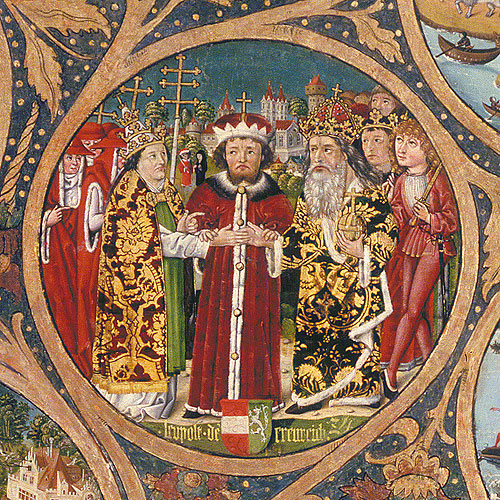 , c. 1176
, c. 1176
son of Leopold V and Helena of Hungary , Theodora Angelina
1203
seven children , 28 July 1230
San Germano
aged about 54 , - , width=auto, Frederick II the Quarrelsome
(''Friedrich der Streitbare'')
1230–1246 , , 25 April 1211
, 25 April 1211
son of Leopold VI and Theodora Angelina , (1) Sophia Laskarina
no issue
(2) Agnes of Merania
1229
no issue , 15 June 1246
aged 35 , -
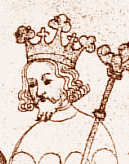 After Frederick's death, the succession of the Duchy was disputed between various claimants, based in two main rival heiresses:
* Through Margaret of Austria, sister of Frederick II:
** ''Henry and Frederick of Hohenstaufen'', sons, claimants 1246/50 - c.1252?
** ''
After Frederick's death, the succession of the Duchy was disputed between various claimants, based in two main rival heiresses:
* Through Margaret of Austria, sister of Frederick II:
** ''Henry and Frederick of Hohenstaufen'', sons, claimants 1246/50 - c.1252?
** ''
11 August 1804 – 2 March 1835 , , 12 February 1768
, 12 February 1768
eldest son of Leopold VII and
6 January 1788
one daughter
(2)
15 September 1790
12 children
(3)
6 January 1808
no issue
(4)
29 October 1816
no issue , 2 March 1835
aged 67 , - , width=auto, Ferdinand I
2 March 1835 – 2 December 1848 , , 19 April 1793
, 19 April 1793
eldest son of Francis II and
27 February 1831
no issue , 29 June 1875
aged 82 , - , width=auto, Francis Joseph I
2 December 1848 – 21 November 1916 , , 18 August 1830
, 18 August 1830
eldest son of
24 April 1854
Augustinerkirche
four children , 21 November 1916
aged 86 , - , width=auto,
21 November 1916 – 11 November 1918 ,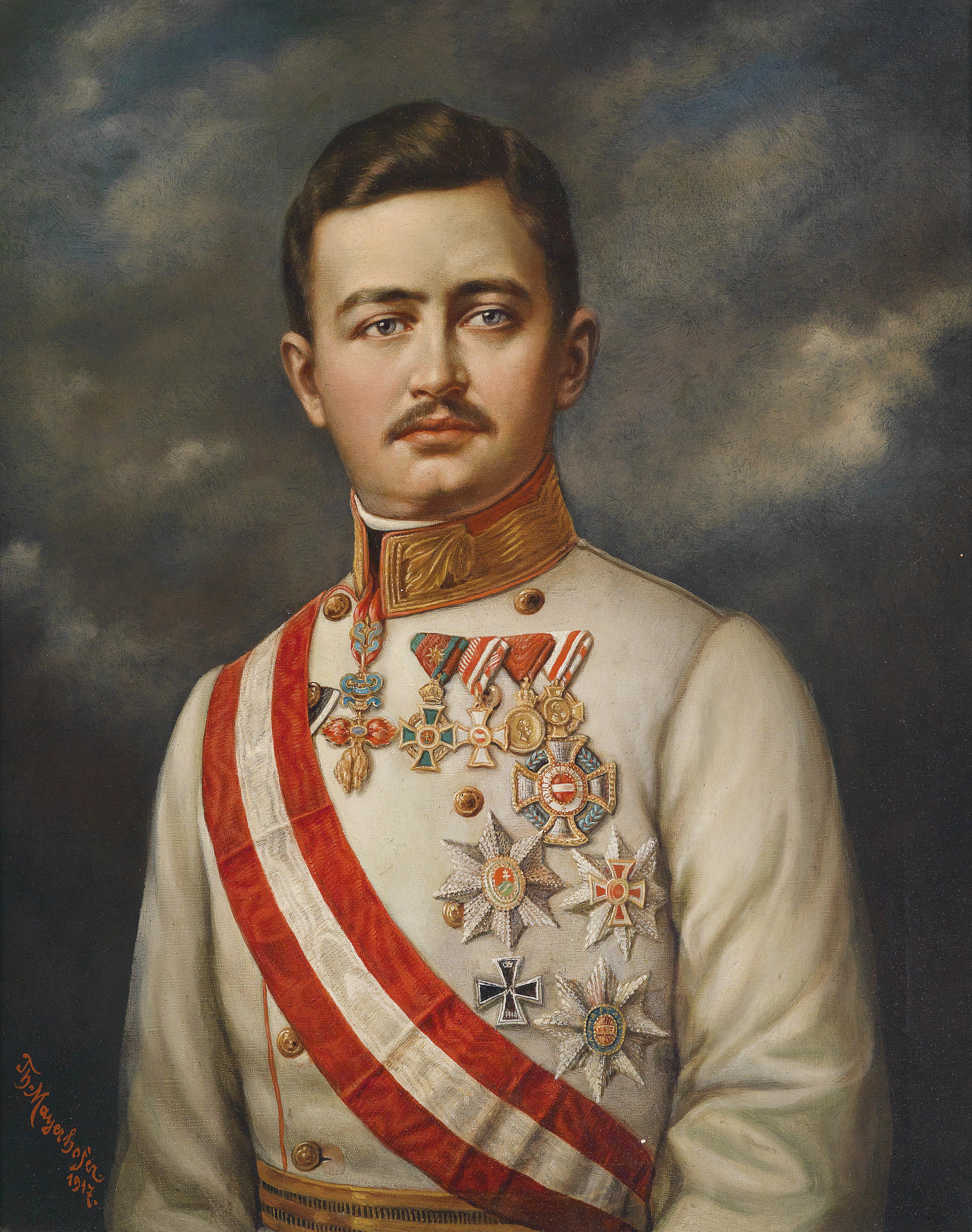 , 17 August 1887
, 17 August 1887
eldest son of Archduke Otto Francis of Austria and Princess Maria Josepha of Saxony ,
21 October 1911
Schwarzau Castle
eight children , 1 April 1922
aged 34 , -
Margraviate of Austria
The Margraviate of Austria (german: Markgrafschaft Österreich) was a medieval frontier march, centered along the river Danube, between the river Enns and the Vienna Woods (''Wienerwald''), within the territory of modern Austrian provinces of ...
, the Duchy of Austria
The Duchy of Austria (german: Herzogtum Österreich) was a medieval principality of the Holy Roman Empire, established in 1156 by the '' Privilegium Minus'', when the Margraviate of Austria (''Ostarrîchi'') was detached from Bavaria and eleva ...
or the Archduchy of Austria
The Archduchy of Austria (german: Erzherzogtum Österreich) was a major principality of the Holy Roman Empire and the nucleus of the Habsburg monarchy. With its capital at Vienna, the archduchy was centered at the Empire's southeastern peripher ...
. From 976 until 1246, the margraviate and its successor, the duchy, was ruled by the House of Babenberg
The House of Babenberg was a noble dynasty of Austrian Dukes and Margraves. Originally from Bamberg in the Duchy of Franconia (present-day Bavaria), the Babenbergs ruled the imperial Margraviate of Austria from its creation in 976 AD until its ...
. At that time, those states were part of the Holy Roman Empire
The Holy Roman Empire was a political entity in Western, Central, and Southern Europe that developed during the Early Middle Ages and continued until its dissolution in 1806 during the Napoleonic Wars.
From the accession of Otto I in 962 unt ...
. From 1246 until 1918, the duchy and its successor, the archduchy, was ruled by the House of Habsburg
The House of Habsburg (), alternatively spelled Hapsburg in Englishgerman: Haus Habsburg, ; es, Casa de Habsburgo; hu, Habsburg család, it, Casa di Asburgo, nl, Huis van Habsburg, pl, dom Habsburgów, pt, Casa de Habsburgo, la, Domus Hab ...
. Following the defeat of Austria-Hungary
Austria-Hungary, often referred to as the Austro-Hungarian Empire,, the Dual Monarchy, or Austria, was a constitutional monarchy and great power in Central Europe between 1867 and 1918. It was formed with the Austro-Hungarian Compromise of ...
in World War I
World War I (28 July 1914 11 November 1918), often abbreviated as WWI, was List of wars and anthropogenic disasters by death toll, one of the deadliest global conflicts in history. Belligerents included much of Europe, the Russian Empire, ...
, the titles were abolished or fell into abeyance with the erection of the modern Republic of Austria
Austria, , bar, Östareich officially the Republic of Austria, is a country in the southern part of Central Europe, lying in the Eastern Alps. It is a federation of nine States of Austria, states, one of which is the capital, Vienna, th ...
.
Margraves of Austria
The March of Austria, also known as ''Marcha Orientalis'', was first formed in 976 out of the lands that had once been theMarch of Pannonia
The March of Pannonia or Eastern March ( la, marcha orientalis) was a frontier march of the Carolingian Empire, named after the former Roman province of ''Pannonia'' and carved out of the preceding and larger Avar march.
It was referred to in s ...
in Carolingian
The Carolingian dynasty (; known variously as the Carlovingians, Carolingus, Carolings, Karolinger or Karlings) was a Frankish noble family named after Charlemagne, grandson of mayor Charles Martel and a descendant of the Arnulfing and Pippi ...
times. The oldest attestation dates back to 996, where the written name "ostarrichi" occurs in a document transferring land in present-day Austria to a Bavarian monastery
A monastery is a building or complex of buildings comprising the domestic quarters and workplaces of monastics, monks or nuns, whether living in communities or alone (hermits). A monastery generally includes a place reserved for prayer whic ...
.
House of Babenberg
, width=auto, Leopold I the Illustrious(''Luitpold der Erlauchte'')
976–994 , , c. 940 , Richardis of Sualafeldgau
nine children , 10 July 994
Würzburg
Würzburg (; Main-Franconian: ) is a city in the region of Franconia in the north of the German state of Bavaria. Würzburg is the administrative seat of the ''Regierungsbezirk'' Lower Franconia. It spans the banks of the Main River.
Würzburg ...
aged about 54 , - , width=auto, Henry I the Strong
(''Heinrich der Starke'')
994–1018 , , late 10th century
son of Leopold I and Richardis of Sualafeldgau , ''never married'' , 23 June 1018 , - , width=auto, Adalbert I the Victorious
(''Adalbert der Siegreiche'')
1018–1055 ,
 , c. 985
, c. 985son of Leopold I and Richardis of Sualafeldgau , (1) Glismod of West-Saxony
no issue
(2)
Frozza Orseolo
Frozza Orseolo (1015 – 17 February 1071) was a Margravine of Austria by marriage to Adalbert, Margrave of Austria.
Life
Frozza was born in Venice as a daughter of Otto Orseolo and his wife Grimelda of Hungary, Doge of Venice, and granddaughter ...
one issue , 26 May 1055
Melk
Melk (; older spelling: ) is a city of Austria, in the federal state of Lower Austria, next to the Wachau valley along the Danube. Melk has a population of 5,257 (as of 2012). It is best known as the site of a massive baroque Benedictine monastery ...
aged about 70 , - , width=auto, Ernest the Brave
(''Ernst der Tapfere'')
1055–1075 ,
 , c. 1027
, c. 1027son of Adalbert and Frozza Orseolo , (1)
Adelaide of Eilenburg
Adelaide of Eilenburg ( 1030 – 26 January 1071) was a German noblewoman. She was a daughter of Margrave Dedi I of the Saxon Eastern March and his first wife, Oda of Lusatia.
In 1060, she married Margrave Ernest of Austria during his reig ...
1060
three children
(2)
Swanhilde of Ungarnmark
Swanhilde of Ungarnmark (''Swanhilde von der Ungarnmark''; died 1120) was an Austrian royal consort as Margravine of Austria
This is a list of the Austrian empresses, archduchesses, duchesses and margravines, wives of the rulers of Austria. T ...
1072
no issue , 10 June 1075
aged about 48 , - , width=auto, Leopold II the Fair
(''Luitpold der Schöne'')
1075–1095 ,
 , c. 1050
, c. 1050son of
Ernest
Ernest is a given name derived from Germanic word ''ernst'', meaning "serious". Notable people and fictional characters with the name include:
People
*Archduke Ernest of Austria (1553–1595), son of Maximilian II, Holy Roman Emperor
* Ernest, ...
and Adelaide of Eilenburg
, Ida of Cham
Ida of Austria ( 1055 – September 1101) was a Margravine of Austria by marriage to Leopold II of Austria. She was a crusader, participating in the Crusade of 1101 with her own army. Steven Runciman: ''Geschichte der Kreuzzüge'' ('A History of ...
1065
eight children , 12 October 1095
aged about 45 , - , width=auto, Leopold III the Good
(''Luitpold der Heilige'')
1095–1136 ,
 , c. 1073
, c. 1073Melk
Melk (; older spelling: ) is a city of Austria, in the federal state of Lower Austria, next to the Wachau valley along the Danube. Melk has a population of 5,257 (as of 2012). It is best known as the site of a massive baroque Benedictine monastery ...
son of Leopold II and
Ida of Cham
Ida of Austria ( 1055 – September 1101) was a Margravine of Austria by marriage to Leopold II of Austria. She was a crusader, participating in the Crusade of 1101 with her own army. Steven Runciman: ''Geschichte der Kreuzzüge'' ('A History of ...
, (1) Maria of Pergno children
(2)
Agnes of Germany
Agnes of Waiblingen (1072/73 – 24 September 1143), also known as Agnes of Germany, Agnes of Poitou and Agnes of Saarbrücken, was a member of the Salian imperial family. Through her first marriage, she was Duchess of Swabia; through her secon ...
1106
eighteen children , 15 November 1136
Vienna
en, Viennese
, iso_code = AT-9
, registration_plate = W
, postal_code_type = Postal code
, postal_code =
, timezone = CET
, utc_offset = +1
, timezone_DST ...
aged about 63 , - , width=auto, Adalbert II the Devout
(''Adalbert der Andächtige'')
1136-1137 ,
 , c. 1107
, c. 1107son of Leopold III and
Agnes of Germany
Agnes of Waiblingen (1072/73 – 24 September 1143), also known as Agnes of Germany, Agnes of Poitou and Agnes of Saarbrücken, was a member of the Salian imperial family. Through her first marriage, she was Duchess of Swabia; through her secon ...
, (1) Adelaide of Polandno children
(2)
Hedwig of Hungary Hedwig may refer to:
People and fictional characters
* Hedwig (name), a list of people and fictional characters with the given name
* Grzegorz Hedwig (born 1988), Polish slalom canoeist
* Johann Hedwig, (1730–1799), German botanist
* Romanus A ...
1132
no children , 9 November 1137
Vienna
en, Viennese
, iso_code = AT-9
, registration_plate = W
, postal_code_type = Postal code
, postal_code =
, timezone = CET
, utc_offset = +1
, timezone_DST ...
aged about 30 , - , width=auto, Leopold IV the Generous
(''Luitpold der Freigiebige'')
1137–1141 ,
 , c. 1108
, c. 1108son of Leopold III and
Agnes of Germany
Agnes of Waiblingen (1072/73 – 24 September 1143), also known as Agnes of Germany, Agnes of Poitou and Agnes of Saarbrücken, was a member of the Salian imperial family. Through her first marriage, she was Duchess of Swabia; through her secon ...
, Maria of Bohemia28 September 1138
no issue , 18 October 1141
Niederalteich
aged about 33 , - , width=auto, Henry II Jasomirgott
(''Heinrich Jasomirgott'')
1141–1156 ,
 , c. 1107
, c. 1107son of Leopold III and
Agnes of Germany
Agnes of Waiblingen (1072/73 – 24 September 1143), also known as Agnes of Germany, Agnes of Poitou and Agnes of Saarbrücken, was a member of the Salian imperial family. Through her first marriage, she was Duchess of Swabia; through her secon ...
, (1) Gertrude of Süpplingenburg1 May 1142
one daughter
(2) Theodora Komnene
1148
three children , 13 January 1177
aged about 70 , -
Dukes of Austria
In 1156, the Privilegium Minus elevated the march to aduchy
A duchy, also called a dukedom, is a medieval country, territory, fief, or domain ruled by a duke or duchess, a ruler hierarchically second to the king or queen in Western European tradition.
There once existed an important difference between ...
, independent of the Duchy of Bavaria
The Duchy of Bavaria (German: ''Herzogtum Bayern'') was a frontier region in the southeastern part of the Merovingian kingdom from the sixth through the eighth century. It was settled by Bavarian tribes and ruled by dukes (''duces'') under ...
.
House of Babenberg
, width=auto, Henry II Jasomirgott(''Heinrich Jasomirgott'')
1156–1177 ,
 , c. 1107
, c. 1107son of Leopold III and
Agnes of Germany
Agnes of Waiblingen (1072/73 – 24 September 1143), also known as Agnes of Germany, Agnes of Poitou and Agnes of Saarbrücken, was a member of the Salian imperial family. Through her first marriage, she was Duchess of Swabia; through her secon ...
, (1) Gertrude of Süpplingenburg1 May 1142
one daughter
(2) Theodora Komnene
1148
three children , 13 January 1177
aged about 70 , - , width=auto, Leopold V the Virtuous
(''Luitpold der Tugendhafte'')
1177–1194 ,
 , c. 1157
, c. 1157son of Henry II and Theodora Komnene , Helena of Hungary
1174
four children , 31 December 1194
Graz
Graz (; sl, Gradec) is the capital city of the Austrian state of Styria and second-largest city in Austria after Vienna. As of 1 January 2021, it had a population of 331,562 (294,236 of whom had principal-residence status). In 2018, the popula ...
aged about 37 , - , width=auto, Frederick I the Catholic
(''Friedrich der Katholische'')
1195–1198 ,
 , c. 1175
, c. 1175son of Leopold V and Helena of Hungary , ''never married'' , 16 April 1198
The Holy Land
aged about 23 , - , width=auto, Leopold VI the Glorious
(''Luitpold der Glorreiche'')
1198–1230 ,
 , c. 1176
, c. 1176son of Leopold V and Helena of Hungary , Theodora Angelina
1203
seven children , 28 July 1230
San Germano
aged about 54 , - , width=auto, Frederick II the Quarrelsome
(''Friedrich der Streitbare'')
1230–1246 ,
 , 25 April 1211
, 25 April 1211Wiener Neustadt
Wiener Neustadt (; ; Central Bavarian: ''Weana Neistod'') is a city located south of Vienna, in the state of Lower Austria, in northeast Austria. It is a self-governed city and the seat of the district administration of Wiener Neustadt-Land Distr ...
son of Leopold VI and Theodora Angelina , (1) Sophia Laskarina
no issue
(2) Agnes of Merania
1229
no issue , 15 June 1246
Leitha
The Leitha (; or , formerly ; Czech and sk, Litava) is a river in Austria and Hungary, a right tributary of the Danube. It is long ( including its source river Schwarza). Its basin area is .
Etymology
The ''Lithaha'' River in the Carolingia ...
aged 35 , -
Interregnum
 After Frederick's death, the succession of the Duchy was disputed between various claimants, based in two main rival heiresses:
* Through Margaret of Austria, sister of Frederick II:
** ''Henry and Frederick of Hohenstaufen'', sons, claimants 1246/50 - c.1252?
** ''
After Frederick's death, the succession of the Duchy was disputed between various claimants, based in two main rival heiresses:
* Through Margaret of Austria, sister of Frederick II:
** ''Henry and Frederick of Hohenstaufen'', sons, claimants 1246/50 - c.1252?
** ''Ottokar II of Bohemia
Ottokar II ( cs, Přemysl Otakar II.; , in Městec Králové, Bohemia – 26 August 1278, in Dürnkrut, Lower Austria), the Iron and Golden King, was a member of the Přemyslid dynasty who reigned as King of Bohemia from 1253 until his dea ...
'', second husband, claimant 1251–1278
* Through Gertrude of Austria, niece of Frederick II:
**'' Vladislas, Margrave of Moravia'', first husband, claimant 1246–1247
**'' Herman of Baden'', second husband, claimant 1248–1250
**'' Roman Danylovich'', third husband, claimant 1252-1253
**''Frederick I, Margrave of Baden
Frederick I of Baden (1249 – October 29, 1268), a member of the House of Zähringen, was Margrave of Baden and of Verona, as well as claimant Duke of Austria from 1250 until his death.Regesten der Markgrafen von Baden und Hachberg, 1050-1515. ...
'', son, claimant c.1253–1268
Dukes and archdukes of Austria under the House of Habsburg
In 1278, KingRudolph I of Germany
Rudolf I (1 May 1218 – 15 July 1291) was the first King of Germany from the House of Habsburg. The first of the count-kings of Germany, he reigned from 1273 until his death.
Rudolf's election marked the end of the Great Interregnum whic ...
defeated Ottokar and took control of Austria. In 1282 he invested his sons with the duchies of Austria and Styria, thereby securing it for the House of Habsburg
The House of Habsburg (), alternatively spelled Hapsburg in Englishgerman: Haus Habsburg, ; es, Casa de Habsburgo; hu, Habsburg család, it, Casa di Asburgo, nl, Huis van Habsburg, pl, dom Habsburgów, pt, Casa de Habsburgo, la, Domus Hab ...
. Austria became one of the territories that remained under Habsburg rule for more than 600 years, forming the core of the Habsburg monarchy
The Habsburg monarchy (german: Habsburgermonarchie, ), also known as the Danubian monarchy (german: Donaumonarchie, ), or Habsburg Empire (german: Habsburgerreich, ), was the collection of empires, kingdoms, duchies, counties and other polities ...
and the present-day country of Austria
Austria, , bar, Östareich officially the Republic of Austria, is a country in the southern part of Central Europe, lying in the Eastern Alps. It is a federation of nine states, one of which is the capital, Vienna, the most populous ...
.
Partitions of Austria under Habsburg domain
Table of rulers
Emperors of Austria
, width=auto,Francis I Francis I or Francis the First may refer to:
* Francesco I Gonzaga (1366–1407)
* Francis I, Duke of Brittany (1414–1450), reigned 1442–1450
* Francis I of France (1494–1547), King of France, reigned 1515–1547
* Francis I, Duke of Saxe-Lau ...
11 August 1804 – 2 March 1835 ,
 , 12 February 1768
, 12 February 1768Florence
Florence ( ; it, Firenze ) is a city in Central Italy and the capital city of the Tuscany region. It is the most populated city in Tuscany, with 383,083 inhabitants in 2016, and over 1,520,000 in its metropolitan area.Bilancio demografico ...
eldest son of Leopold VII and
Maria Luisa of Spain
Infanta Maria Luisa of Spain (Spanish: ''María Luisa'', German: ''Maria Ludovika''; 24 November 1745 – 15 May 1792) was Holy Roman Empress, German Queen, Queen of Hungary and Bohemia, and Grand Duchess of Tuscany as the spouse of Leopold II, H ...
, (1) Elisabeth of Württemberg
Elizabeth or Elisabeth may refer to:
People
* Elizabeth (given name), a female given name (including people with that name)
* Elizabeth (biblical figure), mother of John the Baptist
Ships
* HMS ''Elizabeth'', several ships
* ''Elisabeth'' (sch ...
6 January 1788
Vienna
en, Viennese
, iso_code = AT-9
, registration_plate = W
, postal_code_type = Postal code
, postal_code =
, timezone = CET
, utc_offset = +1
, timezone_DST ...
one daughter
(2)
Maria Theresa of Naples and Sicily
Maria Theresa of Naples and Sicily (6 June 1772 – 13 April 1807) was the first Empress of Austria and last Holy Roman Empress as the spouse of Francis II. She was born a Princess of Naples as the eldest daughter of King Ferdinand I of the T ...
15 September 1790
Vienna
en, Viennese
, iso_code = AT-9
, registration_plate = W
, postal_code_type = Postal code
, postal_code =
, timezone = CET
, utc_offset = +1
, timezone_DST ...
12 children
(3)
Maria Ludovika of Austria-Este
Maria Ludovika of Austria-Este, also known as Maria Ludovika of Modena, (german: Maria Ludovika Beatrix von Modena; 14 December 1787 – 7 April 1816) was the daughter of Archduke Ferdinand of Austria-Este (1754–1806) and his wife, Maria Beatri ...
6 January 1808
Vienna
en, Viennese
, iso_code = AT-9
, registration_plate = W
, postal_code_type = Postal code
, postal_code =
, timezone = CET
, utc_offset = +1
, timezone_DST ...
no issue
(4)
Caroline Augusta of Bavaria
Princess Caroline Augusta of Bavaria (german: Karoline Auguste; Mannheim, 8 February 1792 – 9 February 1873 in Vienna) was Empress of Austria by marriage to Francis I of Austria. She was a daughter of King Maximilian I Joseph of Bavaria and ...
29 October 1816
Vienna
en, Viennese
, iso_code = AT-9
, registration_plate = W
, postal_code_type = Postal code
, postal_code =
, timezone = CET
, utc_offset = +1
, timezone_DST ...
no issue , 2 March 1835
Vienna
en, Viennese
, iso_code = AT-9
, registration_plate = W
, postal_code_type = Postal code
, postal_code =
, timezone = CET
, utc_offset = +1
, timezone_DST ...
aged 67 , - , width=auto, Ferdinand I
2 March 1835 – 2 December 1848 ,
 , 19 April 1793
, 19 April 1793Vienna
en, Viennese
, iso_code = AT-9
, registration_plate = W
, postal_code_type = Postal code
, postal_code =
, timezone = CET
, utc_offset = +1
, timezone_DST ...
eldest son of Francis II and
Maria Theresa of Naples and Sicily
Maria Theresa of Naples and Sicily (6 June 1772 – 13 April 1807) was the first Empress of Austria and last Holy Roman Empress as the spouse of Francis II. She was born a Princess of Naples as the eldest daughter of King Ferdinand I of the T ...
, Maria Anna of Savoy
Maria Anna of Savoy ( it, Maria Anna Ricciarda Carolina Margherita Pia; 19 September 1803 – 4 May 1884) was Empress of Austria and Queen of Hungary (see Grand title of the Empress of Austria) by marriage to Emperor Ferdinand I of Austria.
Biogra ...
27 February 1831
Vienna
en, Viennese
, iso_code = AT-9
, registration_plate = W
, postal_code_type = Postal code
, postal_code =
, timezone = CET
, utc_offset = +1
, timezone_DST ...
no issue , 29 June 1875
Prague
Prague ( ; cs, Praha ; german: Prag, ; la, Praga) is the capital and largest city in the Czech Republic, and the historical capital of Bohemia. On the Vltava river, Prague is home to about 1.3 million people. The city has a temperate ...
aged 82 , - , width=auto, Francis Joseph I
2 December 1848 – 21 November 1916 ,
 , 18 August 1830
, 18 August 1830Schönbrunn Palace
Schönbrunn Palace (german: Schloss Schönbrunn ; Central Bavarian: ''Schloss Scheenbrunn'') was the main summer residence of the Habsburg rulers, located in Hietzing, Vienna. The name ''Schönbrunn'' (meaning “beautiful spring”) has its root ...
eldest son of
Archduke Franz Karl of Austria
Archduke Franz Karl Joseph of Austria (17 December 1802 – 8 March 1878) was a member of the House of Habsburg-Lorraine. He was the father of two emperors: Franz Joseph I of Austria and Maximilian I of Mexico. Through his third son Karl Lud ...
and Princess Sophie of Bavaria
, Elisabeth of Bavaria24 April 1854
Augustinerkirche
four children , 21 November 1916
Schönbrunn Palace
Schönbrunn Palace (german: Schloss Schönbrunn ; Central Bavarian: ''Schloss Scheenbrunn'') was the main summer residence of the Habsburg rulers, located in Hietzing, Vienna. The name ''Schönbrunn'' (meaning “beautiful spring”) has its root ...
aged 86 , - , width=auto,
Charles I Charles I may refer to:
Kings and emperors
* Charlemagne (742–814), numbered Charles I in the lists of Holy Roman Emperors and French kings
* Charles I of Anjou (1226–1285), also king of Albania, Jerusalem, Naples and Sicily
* Charles I of ...
21 November 1916 – 11 November 1918 ,
 , 17 August 1887
, 17 August 1887Persenbeug-Gottsdorf
Persenbeug-Gottsdorf is a town in the district of Melk in the Austrian state of Lower Austria
Lower Austria (german: Niederösterreich; Austro-Bavarian: ''Niedaöstareich'', ''Niedaestareich'') is one of the nine states of Austria, located in t ...
eldest son of Archduke Otto Francis of Austria and Princess Maria Josepha of Saxony ,
Zita of Bourbon-Parma
Zita of Bourbon-Parma (''Zita Maria delle Grazie Adelgonda Micaela Raffaela Gabriella Giuseppina Antonia Luisa Agnese''; 9 May 1892 – 14 March 1989) was the wife of Charles, the last monarch of Austria-Hungary. As such, she was the last Empres ...
21 October 1911
Schwarzau Castle
eight children , 1 April 1922
Madeira
)
, anthem = ( en, "Anthem of the Autonomous Region of Madeira")
, song_type = Regional anthem
, image_map=EU-Portugal_with_Madeira_circled.svg
, map_alt=Location of Madeira
, map_caption=Location of Madeira
, subdivision_type=Sovereign st ...
aged 34 , -
Republic of Austria
In 1918, following the breakup of the Austro-Hungarian Monarchy, theRepublic of Austria
Austria, , bar, Östareich officially the Republic of Austria, is a country in the southern part of Central Europe, lying in the Eastern Alps. It is a federation of nine States of Austria, states, one of which is the capital, Vienna, th ...
was established, but ended with "Anschluß
The (, or , ), also known as the (, en, Annexation of Austria), was the annexation of the Federal State of Austria into the German Reich on 13 March 1938.
The idea of an (a united Austria and Germany that would form a " Greater Germany" ...
" into the Third Reich from 1938 to 1945. Following World War II, the current Republic of Austria
Austria, , bar, Östareich officially the Republic of Austria, is a country in the southern part of Central Europe, lying in the Eastern Alps. It is a federation of nine States of Austria, states, one of which is the capital, Vienna, th ...
was established in 1945, even though Austria remained under the control and protection of Allied and Soviet Forces between 1945 and 1955.
The current head of state is the President of Austria
The president of Austria (german: Bundespräsident der Republik Österreich) is the head of state of the Republic of Austria. Though theoretically entrusted with great power by the Constitution, in practice the president is largely a ceremonial ...
; however, in practice, the Chancellor of Austria
The chancellor of the Republic of Austria () is the head of government of the Republic of Austria. The position corresponds to that of Prime Minister in several other parliamentary democracies.
Current officeholder is Karl Nehammer of the Aus ...
is more important. Every law still needs to be signed by the President however.
Otto von Habsburg
Otto von Habsburg (german: Franz Joseph Otto Robert Maria Anton Karl Max Heinrich Sixtus Xaver Felix Renatus Ludwig Gaetan Pius Ignatius, hu, Ferenc József Ottó Róbert Mária Antal Károly Max Heinrich Sixtus Xaver Felix Renatus Lajos Gaetan ...
(1912–2011), son of Charles I, was the head of the Habsburg house from 1922, but never reigned. In 2007 he handed the headship to his oldest son Karl von Habsburg
Karl von Habsburg (given names: ''Karl Thomas Robert Maria Franziskus Georg Bahnam''; born 11 January 1961) is an Austrian politician and the head of the House of Habsburg-Lorraine, therefore being a claimant to the defunct Austro-Hungarian t ...
who was first in the line of succession. He is the current head of the imperial family.
See also
*Austrian nobility
The Austrian nobility (german: österreichischer Adel) is a status group that was officially abolished in 1919 after the fall of Austria-Hungary. The nobles are still part of Austrian society today, but they no longer retain any specific priv ...
* History of Austria
The history of Austria covers the history of Austria and its predecessor states. In the late Iron Age Austria was occupied by people of the Hallstatt Celtic culture (c. 800 BC), they first organized as a Celtic kingdom referred to by the Romans ...
* Pragmatic Sanction of 1713
The Pragmatic Sanction ( la, Sanctio Pragmatica, german: Pragmatische Sanktion) was an edict issued by Charles VI, Holy Roman Emperor, on 19 April 1713 to ensure that the Habsburg hereditary possessions, which included the Archduchy of Austria ...
* List of Austrian consorts
This is a list of the Austrian empresses, archduchesses, duchesses and margravines, wives of the rulers of Austria. The monarchy in Austria was abolished at the end of the First World War in 1918.
The different titles lasted just a little und ...
* List of heirs to the Austrian throne This is a list of people who were heir apparent or heir presumptive to the Archduchy of Austria from when Charles III
Charles III (Charles Philip Arthur George; born 14 November 1948) is King of the United Kingdom and the 14 other Commonw ...
* List of presidents of Austria
This is a list of presidents of Austria since the establishment of that office in 1919.
List of officeholders (1920–present)
Presidents of Austria during the Interwar period
Austria was part of Nazi Germany from 12 March 1938 to ...
* List of chancellors of Austria
References
{{DEFAULTSORT:Rulers of Austria * Austria history-related listsAustria
Austria, , bar, Östareich officially the Republic of Austria, is a country in the southern part of Central Europe, lying in the Eastern Alps. It is a federation of nine states, one of which is the capital, Vienna, the most populous ...
it:Sovrani d'Austria